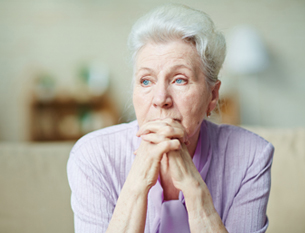
![]()
 Elder abuse is a major public health issue, and it is important that health care providers recognize the signs and symptoms.
Elder abuse is a major public health issue, and it is important that health care providers recognize the signs and symptoms.
The Centers for Disease Control and Prevention (CDC) defines elder abuse as “an intentional act, or failure to act, by a caregiver or another person in a relationship involving an expectation of trust that causes or creates a risk of harm to an older adult” (age 60 and older). Elder abuse includes physical abuse, sexual abuse, emotional/psychological abuse, financial abuse or exploitation, and neglect or self-neglect.
One out of every 10 older adults (5 million per year) residing at home experiences elder abuse. For every case that is reported, approximately 23 cases remain undiscovered.1
Elders who have been abused have a 300 percent higher risk of death2 than those who have not been mistreated. According to the National Council on Aging, financial abuse and fraud are self-reported at a higher rate than emotional, physical, and sexual abuse or neglect, and it costs older Americans over $36.5 billion per year. In almost 90 percent of the cases, the abuser is a family member. Two thirds are adult children or spouses.
Risk factors include:
There is also a higher risk of abuse if the elder has a poor social support system or the individuals in the home are emotionally and financially dependent upon the elder.
Signs and symptoms of physical or psychological elder abuse are frequent unexplained injuries, multiple bruises, pressure sores, broken bones, and multiple somatic complaints, including pain. Other potential red flags are signs of poor nutrition and dehydration, increased susceptibility to new illness, exacerbation of chronic conditions, sleep disturbance, increased anxiety and fear (especially in the presence of the caregiver), and learned helplessness.
Increased care coordination, including strong relationships with people of varying social status, and increased community awareness may help protect an elder from abuse.
Residential institutions need to develop effective monitoring systems that include solid policies and procedures for patient care. Regular training on elder abuse and neglect for employees and caregivers — as well as education on durable power of attorney and advanced directives — is important to create awareness. Regular visits by family members, volunteers, and social workers should be encouraged and accommodated.
If an older adult is in immediate, life-threatening danger, call 911.
Anyone who suspects that an older adult is being mistreated should contact the local Adult Protective Services office, Long-Term Care Ombudsman, or police. Additional information on local resources is available on the Eldercare Locator  online or by calling 1-800-677-1116.
online or by calling 1-800-677-1116.
Resources to call or contact:








Sources: